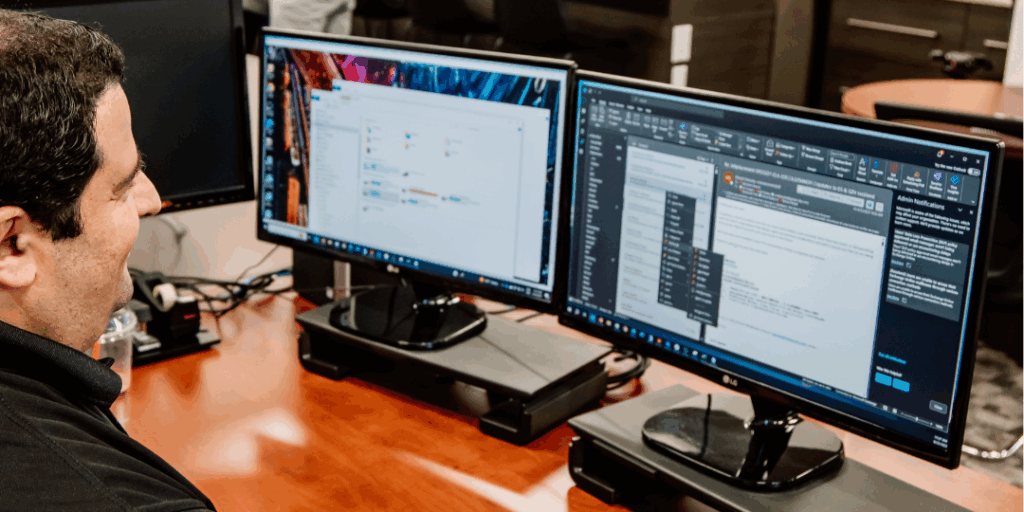
In today’s digital age, offering video content to multilingual audiences is practically a given. In order for that content to be easily understood and more meaningful, more companies are partnering with translation experts that provide voice over translation for eLearning videos and other video content. Voice over translation is performed using different translation techniques, including voice replacement, UN-style voice over, off-screen voice over, lip synching, or actor replacement. Depending on the objectives, the content, and the tone of the video that needs to be translated, working with a professional translation company can help you determine which technique would best serve your audience. While there are other options like subtitling or transcripts, the benefits of voice over translations are loud and clear.
Better Than Subtitling
Voice over translation stands out compared to subtitling. When relying on subtitling, a viewer has to focus his or her energy on keeping up with the words on the screen. In doing so, that same viewer may purposefully ignore or unintentionally miss other components of the video like background details, body language, and other information that is communicated visually. When it comes to encountering new information for the first time, especially in eLearning training modules, it can be difficult to comprehend new information without the support that visual clues in the video were intended to provide. On the other hand, using voice over translation ensures that what the listeners hears seamlessly complements what they view.
Subtitling is also problematic given the fact that different languages result in text expansion and contraction. Depending on the language that the video content is being translated into, the subtitle may either make the screen look very text heavy or may not fit on the same screen. Given the fact that much of eLearning may contain technical or content-specific language, it can cause additional text expansion or contraction by 20, 30, or even 40%. If the words on the screen unfold at a different pace than the original video content, the message may become garbled and other subtler aspects of video, like the tone and mood, may also be lost.
Stands Out Over Transcripts
Especially in instances of eLearning, the benefits of voice over translation versus transcripts are clear. Imagine watching a video in one language while trying to read in another at the same time. Talk about information overload. Unfortunately, some companies choose not to utilize voice over translation. Instead, they share their video content in English along with written transcripts in another language. Using a transcript that is written in a speaker’s native language while trying to follow a video in English is problematic for both the company and the client. Instead of offering access to clear content, the learner is left with guesswork and assumptions, as it can be very difficult to infer tone and determine pacing using only a transcript. In contrast, when voice over translation is utilized, native speakers create eLearning and other videos that are customized to end learners. By using voice over translation, companies can offer training and other eLearning in a multilingual format with nativity and authenticity. This translation ensures that the content and tone of the video are preserved, allowing learners to consume new information in a way that is comfortable and helpful to them.
Added Benefits of Voice over Translation
Voice over translation, regardless of which style is utilized, ensures that the translated material still aligns with the original video content. Specifically, when voice over content is done in a studio setting, the translation team has access to professional sound equipment. Post-production work includes cleaning audio files, as well as normalizing loudness and compressing the dynamic range. By adjusting the difference between the loudest and softest sounds and making other edits through post-production work, the sound quality of the finished product is unparalleled.
Additionally, the linguist and director can partner together to ensure that the voice aligns with the tone of the original content. If the original video content was created for a heavy-duty tool or rugged outdoor gear, the director will select a linguist whose tone, pitch, and pacing complement the product. The professional sound-quality and complementary style of the translation place voice over translation a league ahead of subtitling and transcripts.
Final Thoughts
Voice over translation is an important aspect of sharing information with audiences around the globe. Depending on the original video, different styles of voice over translation may be utilized. No matter which technique is used, voice over translation offers clear benefits compared to subtitles or transcripts. In addition to presenting information in a manner that is much clearer and more authentic, voice over translation can also ensure that mood, tone, and other indirect messages are preserved.
Category: Translation
Tags: Translation Techniques, Video Content, Voice Over Translation
Service: Video Translation
Don't forget to share this post!
Stay Updated with Interpro
Subscribe to our newsletter for the latest updates and insights in translation and localization.





